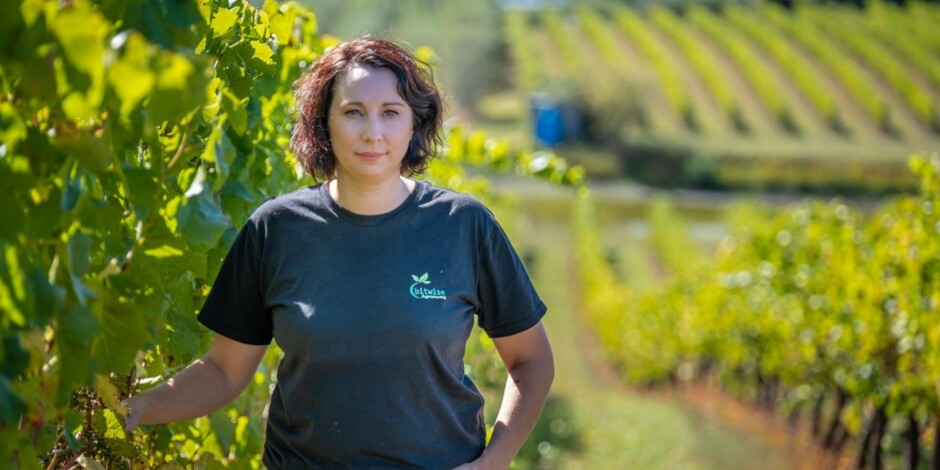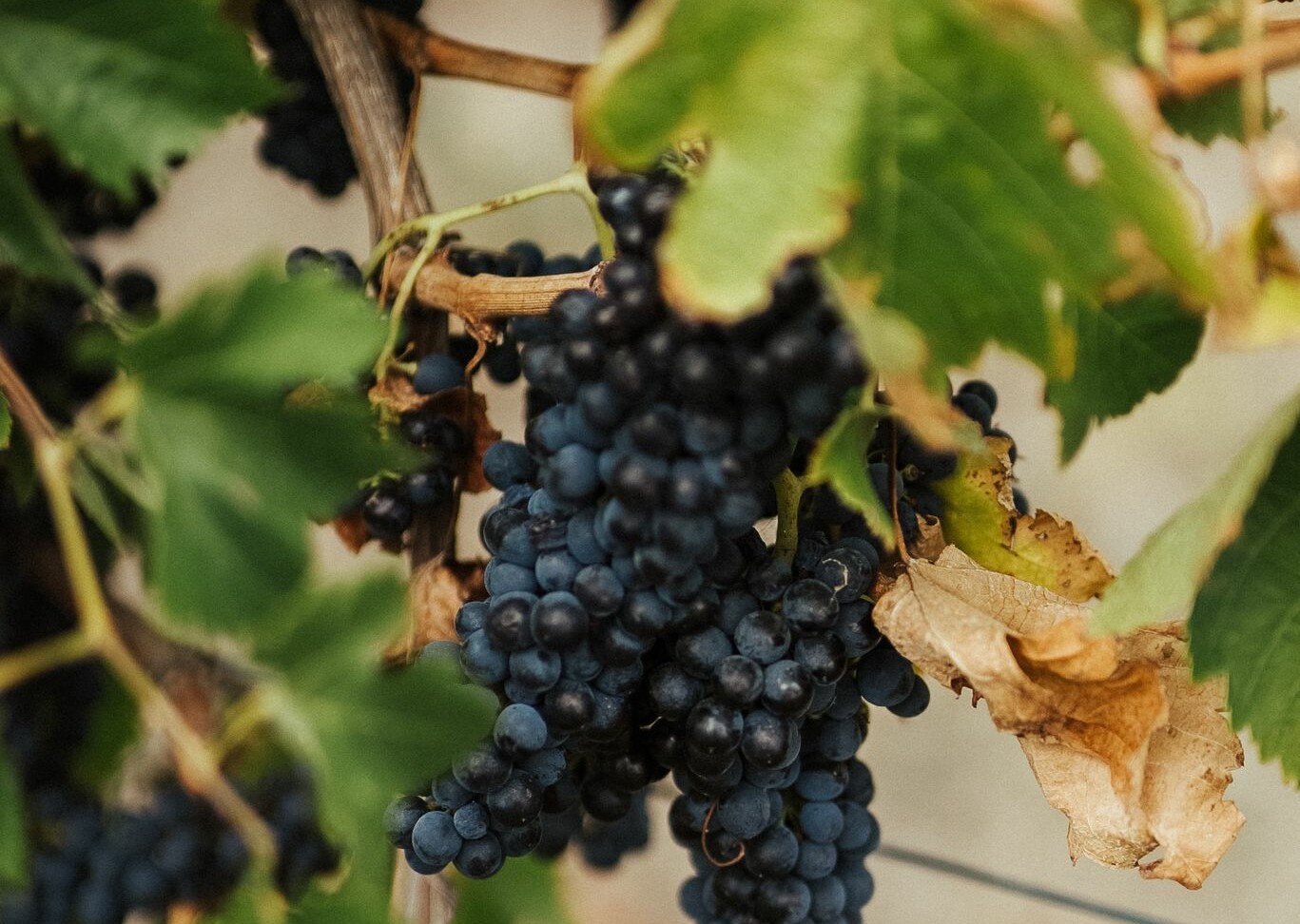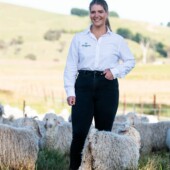Data-driven decisions: artificial intelligence paves the way for accurate crop yield estimates for berry and grape growers
In a digital and data-heavy world, producers can find it difficult to isolate meaningful information and translate it into profitable decision-making. It’s a challenge that Co-Founder and CEO of Bitwise Agronomy Fiona Turner, experienced at her own vineyard, ‘Jinglers Creek’ in Tasmania and something she set about to change. Using expertise in technology development and artificial intelligence (AI), Fiona helps growers capture data that accurately estimates horticultural crop yield, enabling better management.

Fiona has farming in her veins, growing up on a beef and sheep farm in rural New Zealand. She admits that she ‘fell’ into the world of new product development and management when she moved to Australia. In this space, Fiona has built results-oriented technology based on AI and predictive analytics, gained experience using large-scale machinery, production lines, and a great deal of big data.
After 15 years developing new products and management tools across several industries, Fiona was drawn back to the land.
“I think you always have that farming blood in you. I really like big data, but I decided that I wanted to come back to the land, so I bought a vineyard,” said Fiona.
Not long after purchasing Jinglers Creek Vineyard in 2017, Fiona identified issues with the dataset and available software that were supposed to help her manage her crops.
“I didn’t have experience in horticulture or viticulture, and I needed a way to get information to people who could tell me what to do,” she said.
“I went about trying to solve my own problems and started taking videos of my crops. I have a big tech and product development background, and I realised the problem is bigger than just what I’m doing. That is how the Bitwise Agronomy GreenView product was born.”
Providing growers with meaningful data from crop level
After speaking with colleagues and stakeholders in the wine industry, Fiona found there was a strong market demand to improve the accuracy of yield estimates, to address challenges such as market supply and labour hire. Therefore, GreenView was developed with a farmer-first approach.
GreenView combines computer vision, machine learning and artificial intelligence to count and measure the development stages of horticultural crops, providing growers with information like berry and bunch number, shoot length and fruit ripeness.
Fiona said the technology provides a different view to the aerial imagery that grape and berry growers have relied on in the past to gain insight into crop production.
“Aerial imagery looks at a whole block and uses predictive analytics based on canopy cover, while GreenView is sitting down in the plant and looking at the individual pieces of fruit, which you cannot see from the top down, and doing a count and forecasting based on what we can actually see,” said Fiona.

“The product works by using a GoPro camera, attached to existing farm machinery, that records side-on video footage of crops, plant-by-plant, all while the grower is doing jobs like mowing, mulching, or spraying.”
She said the footage is then uploaded to the GreenView portal and analysed using AI.
“We taught the AI to see like an agronomist or viticulturist, it looks for the different phenological stages of the crop and measures and counts the fruit. Growers then receive this information in a report format which is valuable to forecast crop yields or change operational tasks.”
Fiona said this information can be beneficial in managing labour, reducing crop loss, improving quality and providing an estimate of crop yields. All critical factors to the bottom-line of a business.
READ ALSO: Should ‘Right to Repair’ apply to your farm’s data? – evokeAG.
“The berry industry spends thousands a year counting blueberries. We can count those blueberries for a fraction of the cost, saving labour costs and increasing the count accuracy,” said Fiona.
“Increased accuracy leads to better forecasting that can then be passed on to the market. This means that growers are less likely to lose out, be rejected or penalised because they don’t have the food that was originally forecast.”
The Bitwise Agronomy GreenView product is now used by 70 businesses across eight countries. In 2021, Fiona’s work in AI with Bitwise Agronomy landed her second runner-up in the Women in AI Innovator of the Year award and winner in the AI in Agribusiness category.
More recently, in partnership with Burro, a collaborative robotic platform looking to solve labour issues facing farmers, Bitwise Agronomy has been selected as one of the top 10 New Product Winners at the 2023 World Ag Expo.
RELATED: 2023 World Ag Expo Top-10 New Product winners announced
Developing agtech with a farmer-first approach
When it comes to agtech and data, Fiona believes there’s not one solution to fit the whole farm. She said it takes integrated solutions, datasets, and software companies to provide producers with the whole picture of their farm to enable data-driven and profitable decisions.
“It’s about bringing all these different datasets and agtech companies together to get the results the farmer was looking for,” she said.
Fiona is passionate about putting the farmer first, listening to what they say to understand what they want and how to provide the support needed for them to succeed.
“There are so many parameters and environmental factors involved when you are out in the field that make agtech development difficult,” she said.
“Hot weather, cold weather or rain and everyone is time-poor too. You must make your product easy for farmers to use and fit for purpose. If you don’t understand who you are selling to or their needs, then adoption is going to be really hard.
“It’s also important to focus on farmers who are early adopters and have the appetite to use new technology, then really work with them to become advocates for the product. Then, other farmers who might be more risk averse feel more comfortable trying the technology because their neighbour has confirmed that the agtech is tried, tested, and has worked, as well as having a positive return on investment,” said Fiona.
READ ALSO: How to convince your boss to approve your request to attend evokeAG.
Fiona participated in a panel discussion on Day one at evokeAG. 2023 with Nuffield Scholar and Director at SkyKelpie Luke Chaplain, 2022 Australian Young Innovative Farmer of the Year Brad Egan, and Nuffield Scholar and Vineyard Manager at Penley Estate, Hans Loder. You can watch the discussion here.
